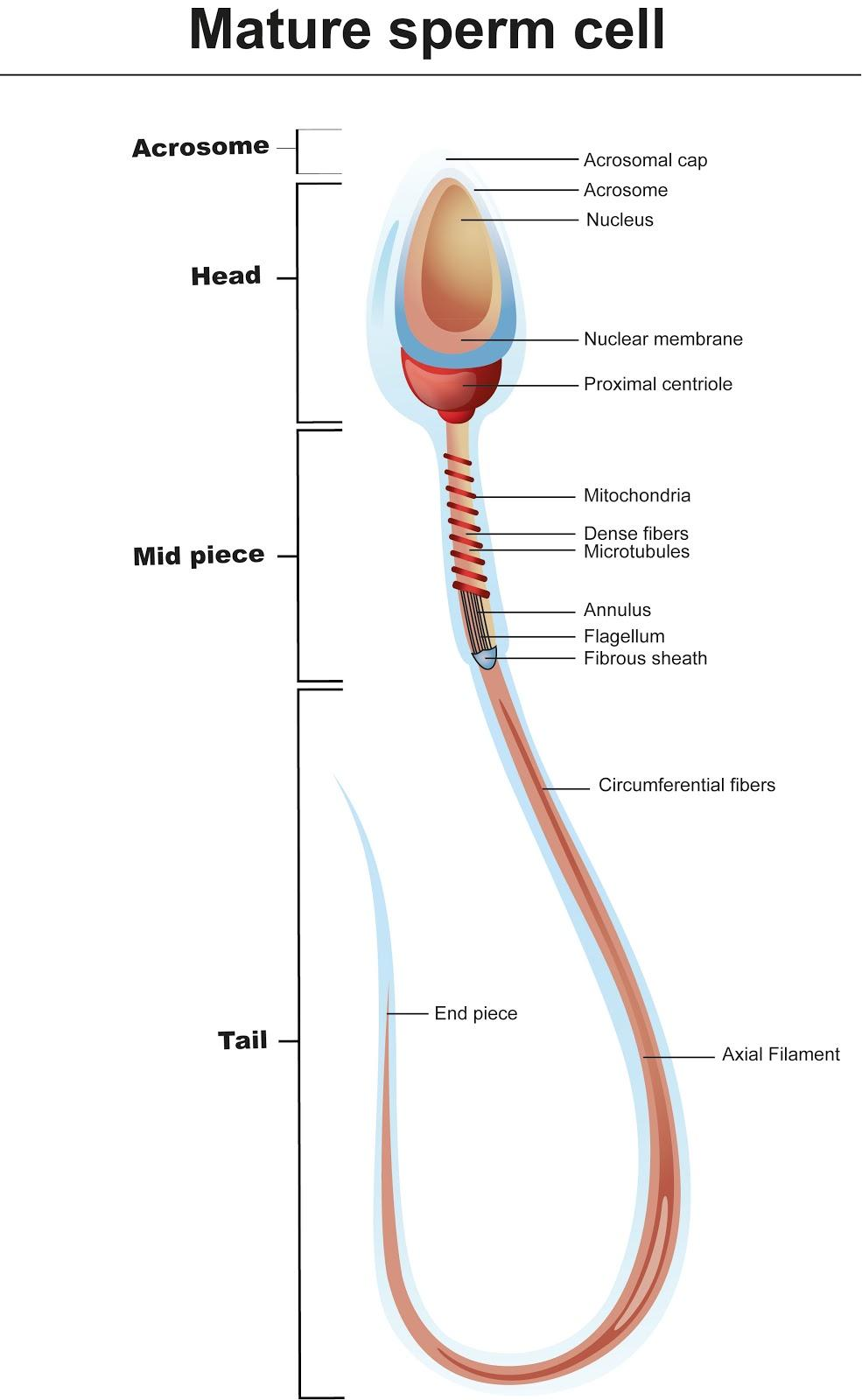
Draw a diagram of the microscopic structure of human sperm. Label the following parts in it and write their functions: (a) Acrosome (b) Nucleus (c) Middle piece.
Answer
447.3k+ views
1 likes
Hint: Sperm is a tadpole-like structure with the presence of a single flagella known as the tail of sperm and it is covered with plasma membrane all around its surface. A sperm is divided into four parts: head, neck, middle piece and tail, where the head part consists of a nucleus with chromosomal material.
Complete answer:

A sperm is a tadpole-like uniflagellate, which is covered with plasma membrane all around its surface. A sperm has mainly four parts like head, neck, middle piece and tail.
-Acrosome is present anterior to the head part of sperm which covers around two-third part of the head surface. It is also called a cap-like acrosome. It consists of enzymes like hyaluronidase, corona penetrating enzyme, acrosin and zona lysin and these enzymes are collectively known as sperm lysin. Enzyme acrosin helps in gamete fusion and zona pellucida penetration which enable the entry of sperm inside the ovum by breaking the thick zona pellucida membrane and fusion of both plasma membranes which results in fertilisation.
-Nucleus is present inside the headpiece of sperm with less dense surface known as nuclear vacuoles. It is haploid with 23 chromosomes which after fertilization with ovum form diploid zygote.
- The middle piece of sperm is a long cylindrical structure which is 5-7 micrometre in length and about 1 micrometre in diameter. It consists of axial filaments of microtubules which are covered by a mitochondrial spiral sheath. This mitochondrial sheath helps in providing energy for sperm swimming toward the ovum. It also resists the death of sperm cells.
Note:
The function of acrosome is similar to lysosome as both consist of lysosomal enzyme hyaluronidase and acrosin. The acrosome is derived from the Golgi complex of spermatid whereas lysosome is derived from the Golgi complex of a normal cell.
In teleost fish acrosomes are absent and fertilisation takes place by the entry of sperm through the micropylar region of the egg.
Complete answer:

A sperm is a tadpole-like uniflagellate, which is covered with plasma membrane all around its surface. A sperm has mainly four parts like head, neck, middle piece and tail.
-Acrosome is present anterior to the head part of sperm which covers around two-third part of the head surface. It is also called a cap-like acrosome. It consists of enzymes like hyaluronidase, corona penetrating enzyme, acrosin and zona lysin and these enzymes are collectively known as sperm lysin. Enzyme acrosin helps in gamete fusion and zona pellucida penetration which enable the entry of sperm inside the ovum by breaking the thick zona pellucida membrane and fusion of both plasma membranes which results in fertilisation.
-Nucleus is present inside the headpiece of sperm with less dense surface known as nuclear vacuoles. It is haploid with 23 chromosomes which after fertilization with ovum form diploid zygote.
- The middle piece of sperm is a long cylindrical structure which is 5-7 micrometre in length and about 1 micrometre in diameter. It consists of axial filaments of microtubules which are covered by a mitochondrial spiral sheath. This mitochondrial sheath helps in providing energy for sperm swimming toward the ovum. It also resists the death of sperm cells.
Note:
The function of acrosome is similar to lysosome as both consist of lysosomal enzyme hyaluronidase and acrosin. The acrosome is derived from the Golgi complex of spermatid whereas lysosome is derived from the Golgi complex of a normal cell.
In teleost fish acrosomes are absent and fertilisation takes place by the entry of sperm through the micropylar region of the egg.
Latest Vedantu courses for you
Grade 10 | CBSE | SCHOOL | English
Vedantu 10 CBSE Pro Course - (2025-26)
School Full course for CBSE students
₹35,000 per year
Recently Updated Pages
Express the following as a fraction and simplify a class 7 maths CBSE

The length and width of a rectangle are in ratio of class 7 maths CBSE

The ratio of the income to the expenditure of a family class 7 maths CBSE

How do you write 025 million in scientific notatio class 7 maths CBSE

How do you convert 295 meters per second to kilometers class 7 maths CBSE

Write the following in Roman numerals 25819 class 7 maths CBSE

Trending doubts
Give 10 examples of unisexual and bisexual flowers

Draw a labelled sketch of the human eye class 12 physics CBSE

Differentiate between homogeneous and heterogeneous class 12 chemistry CBSE

Differentiate between insitu conservation and exsitu class 12 biology CBSE

What are the major means of transport Explain each class 12 social science CBSE

Franz thinks Will they make them sing in German even class 12 english CBSE




